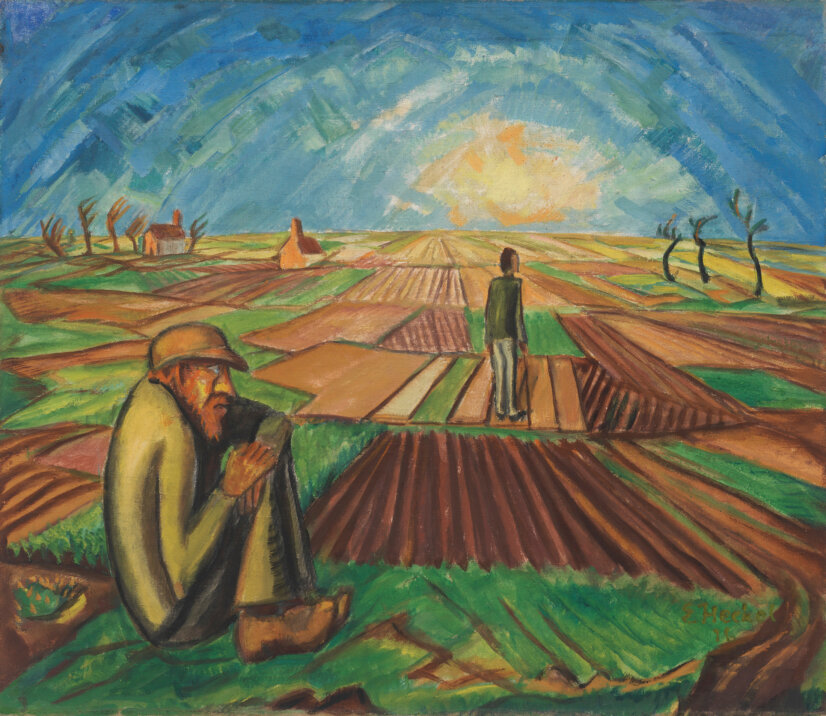MSK Ghent exhibits German Artist Erich Heckel

The Museum of Fine Arts Ghent is devoting an exhibition to German artist Erich Heckel (1883 -1970).
Heckel was one of the main figures of German Expressionism and co-founder of the artists' association Brücke. During World War I, he worked as an orderlyfor the Red Cross in Roeselare, Ostend and Ghent. His fascination for Flemish landscapes and cities takes shape in evocative works of art: romantic and expressive, spiritual and tangible, and above all full of hope. With this monographic exhibition, the MSK highlights a lesser-known but particularly fascinating period of this leading artist.
From the end of the 19thcentury, young artists in Germany object to the fleeting nature of Impressionism. In Dresden, the artists' association Brücke is formed in 1905. The 22-year-old Erich Heckel is one of its co-founders. This association of self-taught artists harbours the ambition to express a strong joie de vivre in a sharedstyle of bright colours and angular shapes. This style is called expressionism: the artist tries to depict the inner emotional life through form and colour, rather than depicting objective reality.
At the outbreak of World War I, Heckel is a young man in his thirties. Despite this, he already enjoys a solid reputation in Germany. During the war, he gets to know Flanders. As an orderlyfor the Red Cross, he travels to Ghent, Roeselare and Ostend. The hospital train, put togetherby Walter Kaesbach, a curator at the Berlin Nationalgalerie, brings otherpainters and writersto Flanders as well. As a result, the emergency hospital at Ostend station grows into a veritable artists' colony. Heckel meets James Ensor there,and develops a special friendship with his fellow nurse, the young poet Ernst Morwitz, whose literary world has an important influence on Heckel's visual work.
During the war, Heckel's artistic work continues as before. As painting materials are hard to come by, he makes do with what is available: coarsely woven linen and diluted tempera. For his wood engravings, he uses mahogany recovered from the panelling of the station's waiting room. While on leave in Germany, Heckel continues to work, establishing contacts with collectors and making plans for exhibitions.
Despite the historical context, Heckel is not a ‘war artist’ but an orderlyworking mainly behind the front lines. As a draughtsman, he makes numerous sketches of the places he visits and people he observes. As a painter, he is particularly impressed by the Flemish landscape and the North Sea, with its peculiar cloud formations where the light is always trying to break through; motifs that seem both strange and familiar to him. The Flemish landscapes recall the early days of Brücke, when Heckel went out to paint in the open air with his friends Ernst Ludwig Kirchner and Karl Schmidt-Rottluff.Besides a several paintings, many gouaches, watercolours, drawings and graphic work have been preserved: views of Roeselare, Ostend and Ghent, sometimes with picturesque figures and bathers, but also still lifes, landscapes and seascapes.
Main Image: Flandrische Ebene(Flemish Plain), 1916, Museum Abteiberg, MönchengladbachTempera on canvas, 84 × 97 cmPhoto: Achim Kukulies, Print: © Nachlass Erich Heckel, Hemmenhofen/SABAM Belgium 2024Online: © VG Bild-Kunst, Bonn /SABAM Belgium 2024
